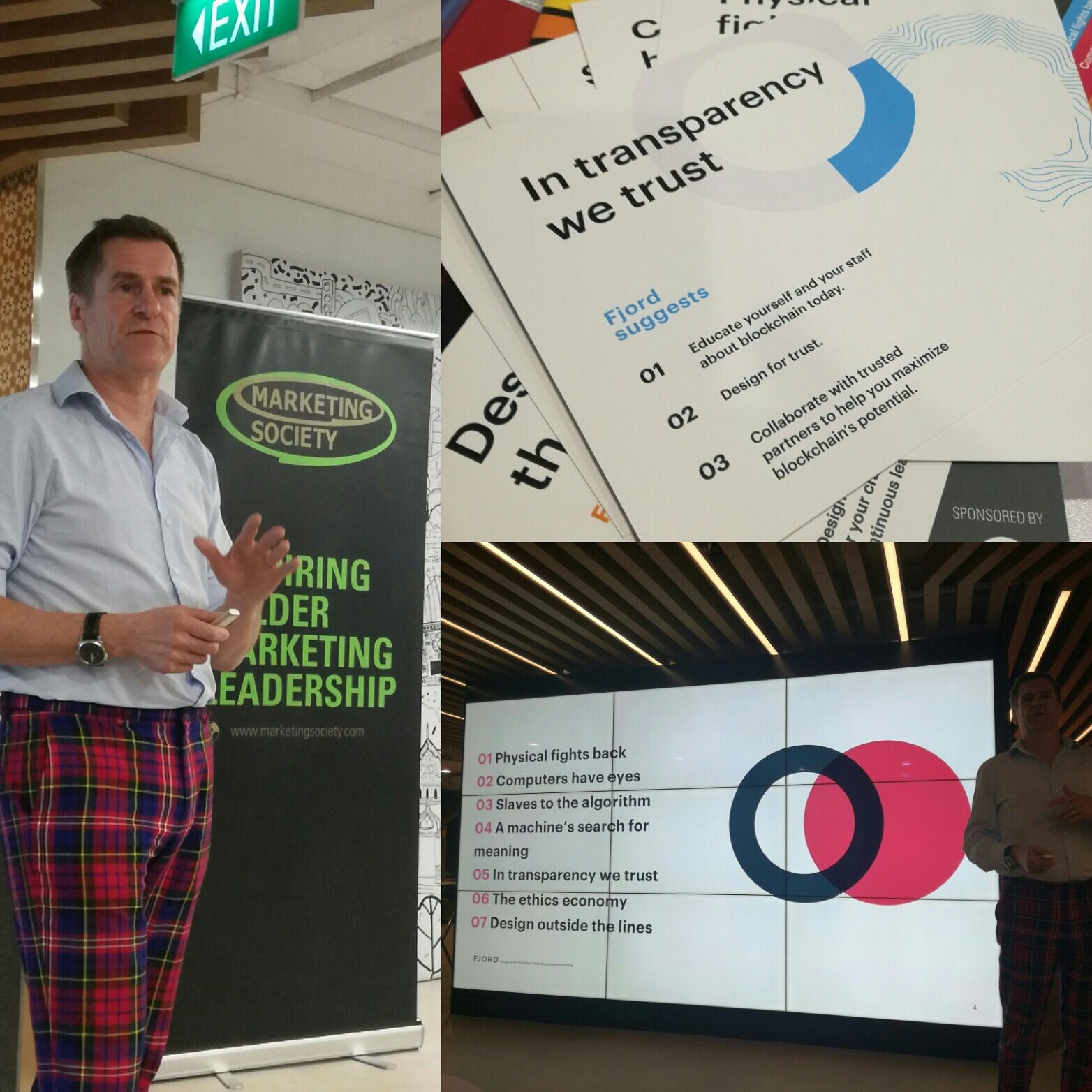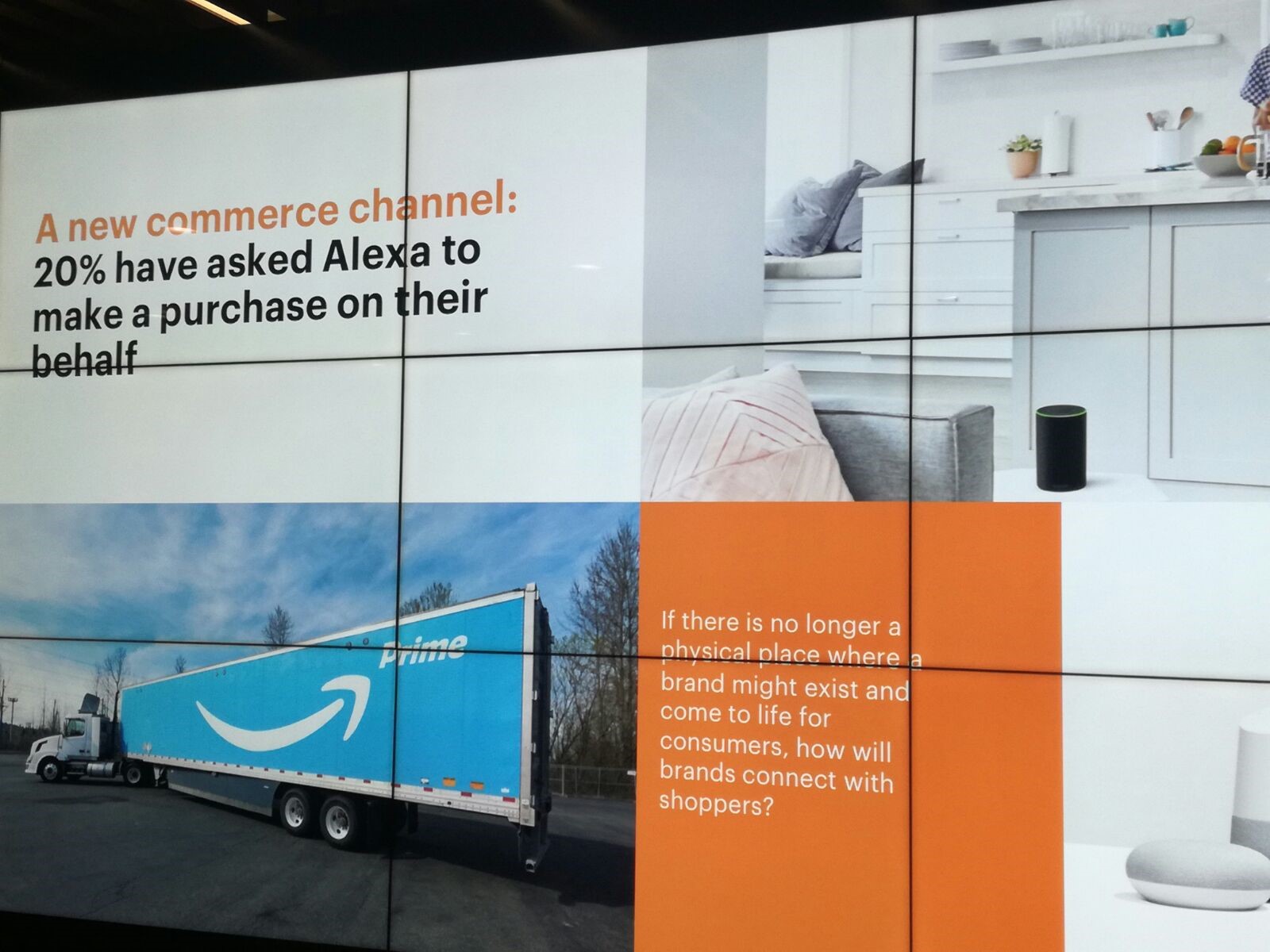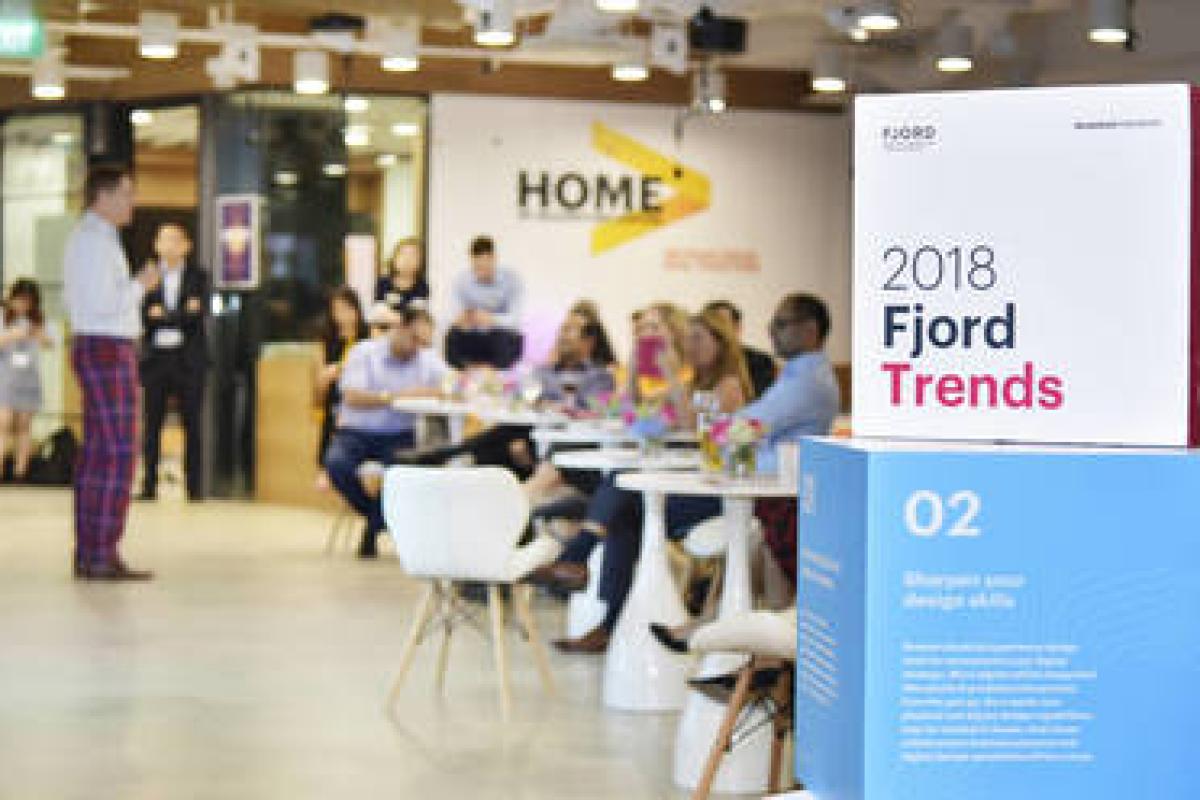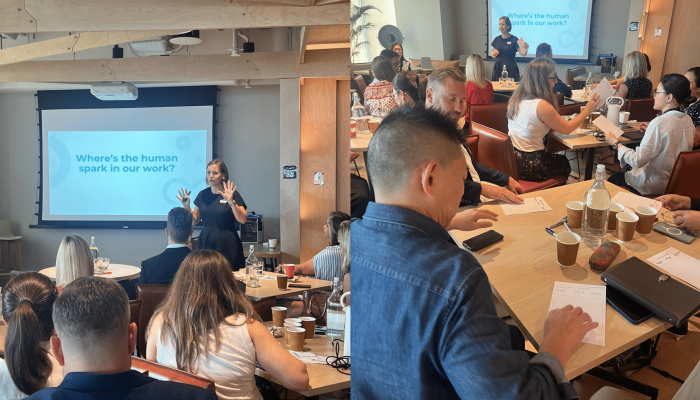I was fortunate to attend a presentation by Mark Curtis, chief client officer, who shared the 2018 Fjord Trends which are an insight into what’s ahead in technology, business and design. Compiled through interaction with both their geographically diverse staff and clients, Fjord annually releases these trends to provide direction and inspiration across the globe.
Hosted by The Marketing Society at the Accenture Interactive offices in Singapore, it was wonderful to hear insights from a globally aware thought leader, sharing trends and examples of brand bravery from the all over the world including the US, China, Australia and Europe!
The meta-theme Mark shared is “tension”; where we as consumers and business leaders struggle to keep up with the pace of change and be comfortable with convenience at the expense of a potential future lack of choice.
Transparency, trust and the physical will be centre stage in 2018.
Underpinning the meta-theme, there are seven key trends:
- Physical fights back
- Computers have eyes
- Alaves to the algorithm
- A machine’s search for meaning
- In transparency we trust
- The ethics economy
- Design outside the lines
You can read all about them via the Fjord Trends website.
The things that stood out for me included:

Retail becomes super-physical and super-powered by digital technology in the background /ceiling. China is equally innovating alongside the USA and both are leveraging data to deliver superior customer experiences. This was later reinforced by Mark when he noted “Place the customer at the centre but also allow the technology to inspire you”
Daily habits are the key micro-moments that matter, and in particular, mirrors are a huge opportunity in the future for what they can tell us about our health, wellbeing and in aggregate about the population. Daily habits are hot moments to interpret consumers; with a camera behind the mirror which is connected to the cloud, this is one of the best places to check in on guaranteed daily engagement. At a micro-level, this can lead to convenience for me (auto schedule haircuts, health checks with doctors etc) and at a macro-level, the data can be aggregated to detect trends and insights about the population's health and wellbeing.
Then there is the movement from screen to voice and what that means for consumers and brands. Are consumers aware who is making the brand choice for them in an auditory world? For boring products like batteries, toilet paper and potentially even insurance, there is a tension between the convenience of low effort purchases traded off with less variety and choice in the long term.

For brands, this means the importance of brand preference and memorability - easy to pronounce in any language, brand names are more important than ever. If you have a boring product, you're in trouble. Marketers must be able to trigger an action and not be boring to remain the automatic choice in their category. For example, Mark shared that Amazon basics battery growth was about 93% year on year...all because of Echo – “the bunny is dead.”
The question is whether governments will step in to regulate the automatic default to the owned branded products at some point?
Of course, there was also talk of Blockchain – and the reality is that for most people, we’re still missing the mental model of what it is in order to transact with it. There is a design issue there to translate the potential to the masses. There's so much potential in what it can deliver, from the grand aim to provide an identity for the 1bn people who currently have no way to prove who they are, to the ability to reverse the digital trend around the marginal cost for copying and distributing, having a distributed ledger will really matter.
Ultimately, the conversation reinforced for me the key tenants that all businesses should be thinking about:
- Design and adjust the experience around your customer - enable your teams to test and learn, as change continues to accelerate and invest in new skills and reskilling your talent to adapt accordingly.
- Design tramlines - Android and ios are the boundary/constraint
- Beauty and craft matter - Such as Monzo and Citymapper
- Insert insanity breaks into agile to introduce new thinking
By Wendy Hogan, CX and marketing strategy director, Oracle and The Marketing Society Singapore board



